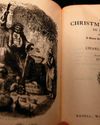
When Private Alex Thompson arrived at Ypres in May 1915, he found himself in the middle of a battle for survival. He was thrust straight into a counterattack against the Germans: the two sides were fighting to secure control of a small hill, known only as "Hill 60".
At 10pm, he left the relative safety of his trench and charged over the top, rifle in hand. Thompson recalled: "We advanced maybe five or 10 yards, [but] some of them never got that length - they were killed going over the trench. That was your training, you see, to just keep going, making for the German trenches."
It was a bloodbath. Thompson recounted: "It was like pie meat for the Germans, near everyone was getting [trapped] in the barbed wire... They were just cutting us like cutting hay. The fire was rapid, continuous, machinegun fire and shrapnel bursting. You wonder who's going to be shot next and I was shot next."
Although Thompson managed to crawl back into the trench and reach safety, many of his companions weren't so lucky. For the next two years, the Allies failed to gain control of that one, small hill.
Millions of men perished in trench warfare, but it was one of the defining strategies of World War I - particularly on the Western Front. However, this strategy was nothing new: armies had been holing down in the earth for centuries, to avoid having soldiers exposed.
But World War I saw the strategy explode. There were several reasons for this: before the war had broken out, military technology had vastly improved: the machine gun had been unveiled in 1884, and artillery had been consistently upgraded since the late 19th century. As well as facing deadly weapons, in 1914 more soldiers were on the battlefield than ever before - meaning more men needed protection.
この記事は BBC History Revealed の July 2023 版に掲載されています。
7 日間の Magzter GOLD 無料トライアルを開始して、何千もの厳選されたプレミアム ストーリー、9,000 以上の雑誌や新聞にアクセスしてください。
すでに購読者です ? サインイン
この記事は BBC History Revealed の July 2023 版に掲載されています。
7 日間の Magzter GOLD 無料トライアルを開始して、何千もの厳選されたプレミアム ストーリー、9,000 以上の雑誌や新聞にアクセスしてください。
すでに購読者です? サインイン

'Dickens's evocation of the fears, excitement and confusion of childhood is peerless'
DR LEE JACKSON ON WHY CHARLES DICKENS REMAINS RELEVANT TODAY

THE AUTHOR GOES ABROAD
Dickens expanded his horizons and boosted his fan-base by venturing overseas - but global fame came with a cost

REVIVING THE FESTIVE SPIRIT
A Christmas Carol wasn't just a bestseller - it changed the way that Britons chose to mark the festive season

GIVING THE POOR A VOICE
From Hard Times to Oliver Twist, Charles Dickens used his pen to help illuminate the lives of the less fortunate

A JOURNEY THROUGH DICKENS'S LONDON
The works of Charles Dickens are synonymous with visions of Victorian London. We talk to Dr Lee Jackson about the author's love of the capital, and the locations that most inspired him

EXCEEDING EXPECTATIONS
Dr Lee Jackson chronicles Charles Dickens's journey from down-at-luck teenager to titan of Victorian literature

GIFTS, TREES & FEASTING
We take a journey through the photo archives to reveal how Christmas and its many traditions have been celebrated over the years - and around the world

WHAT GREAT PAINTINGS SAY
We explore the story behind an allegorical painting that celebrates the triumph of love over hate, peace over war

HELLISH NELL
Malcolm Gaskill delves into the life of Helen Duncan - the fraudulent Scottish medium whose ectoplasm-filled seances saw her ending up on the wrong side of the law

7 THINGS YOU (PROBABLY) DIDN'T KNOW ABOUT THE WHITE HOUSE
Presidential historian Dr Lindsay M Chervinsky reveals some of the most surprising facts about the world-famous US residence